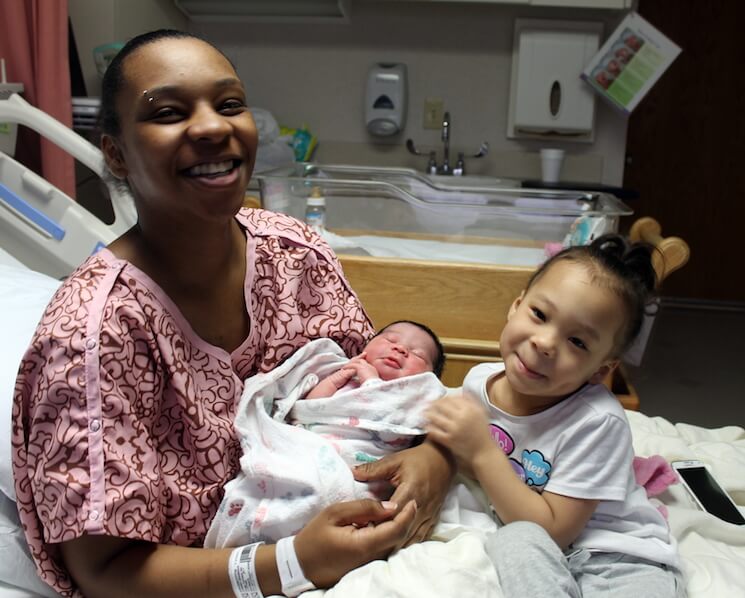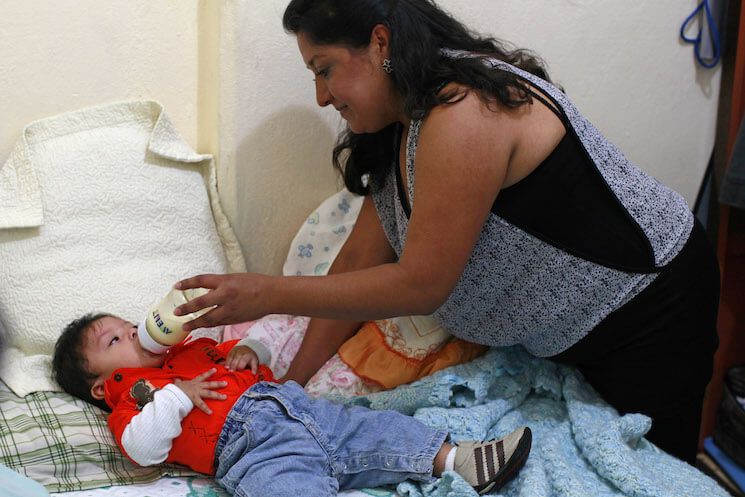California’s paid family leave policy is decreasing nursing home use and saving Medicaid dollars

Nearly every American at some point will face a conflict between family caregiving responsibilities and paid work. Women now comprise nearly half of all employed workers; the majority of married mothers are either breadwinners or co-breadwinners; and the share of single-parent families has more than doubled since 1970. Family caregiving includes not only caring for a new child but also for an aging relative. As Baby Boomers age amid improvements to life expectancy, work-family conflicts for prime-age workers with both young children and aging parents will only grow stronger.
Government policy conversations about paid family and medical leave often focus on the direct and indirect benefits of parental leave, but an important new study sheds light on the impact of paid caregiving leave. The research implies that paid leave for family caregiving may change the way that families care for their aging relatives, with potentially important positive outcomes for aging Americans, their family caregivers, and state and federal budgets.
In their recent article published in the Journal of Public Policy and Administration, University of Iowa’s Kanika Arora and Syracuse University’s Douglas Wolf provide the first-ever empirical study assessing the impact of paid family and medical leave on long-term care patterns. Specifically, the two authors utilize longitudinal, state-level data to assess whether California’s state paid family and medical leave policy led to a decrease in nursing home utilization.
California enacted a comprehensive paid leave policy in 2004, providing access to six weeks of leave for both new parents and family caregivers. The authors analyze data on nursing home utilization (defined as the share of a state’s older population that resides in a nursing home at any point during a given year) for all 50 states plus the District of Columbia from 1999 through 2008. Their longitudinal data allows for a difference-in-difference model comparing the change in nursing home utilization in California before and after the enactment of paid family leave to the change in other states without a public paid family leave program in place—taking into account many other differences in the long-term care environment across states, as well as other related economic factors. The results are striking. The estimated effect of paid family and medical leave on nursing home utilization in California is a decline of more than 11 percent in the share of the elderly residing in nursing homes.
While the mechanism connecting paid leave to lower nursing home utilization is not directly tested in the study, the authors argue that paid leave allows family members to provide timely care to aging relatives in order to prevent institutionalization. Specifically, family leave may allow caregivers to step in and shorten post-acute institutionalization such as nursing home care following a surgical procedure, as well as delay the beginning of nursing home care for what could become a lengthy period of institutionalization for a progressive condition such as Alzheimer’s disease.
Three big take-aways from the study are worth keeping in mind.
First, the decrease in nursing home utilization has important implications not only for aging Americans and their families, but also for the bigger fiscal picture. Nursing home care accounts for the largest share of long-term care costs in the country. These costs not only strain family budgets but also place significant pressure on public finances. Medicaid, which is a joint federal-state program that is financed largely by the states, is the primary payer for 62 percent of nursing facility residents, some of whom deplete their assets in order to become eligible for the program. Medicare, which is fully federally financed and mainly applies to short stays following a hospitalization, covers the costs of about 15 percent of nursing home utilization overall. Institutional care is a substantial burden on state and federal budgets and also is unpopular, as most seniors prefer to receive family or community-based care. That’s why paid family caregiving is so important for policymakers to understand.
Second, the link between paid family and medical leave policy and other social policies designed to facilitate family economic security is an important and underexplored relationship for scholars and policymakers. Existing research on paid leave has focused on the direct effects of paid family leave on women’s labor market participation and long-term wages, as well as indirect effects including child health and business outcomes. Policymakers need more research like Arora and Wolf’s, which recognizes that paid leave policies may have effects on existing public programs. Given that existing social insurance programs such as Social Security Disability Insurance and Medicare are under considerable financial and political pressure, future research would do well to continue to explore the ways in which paid family and medical leave policies may interact with existing programs in ways that could alleviate (or exacerbate) fiscal pressures on both state and federal budgets in the long term.
Third, Arora and Wolf’s nursing home study illustrates the need for access to meaningful data on a host of related issues for policymakers seeking to boost family economic well-being. The authors note that assembling the necessary data for connecting the dots between paid family leave and nursing home care was a substantial challenge and required “a combination of publicly- and privately-available (i.e. supplied by helpful colleagues) and somewhat obscure and hard-to-locate sources.” Like others calling for more readily available administrative data, Arora and Wolf suggest that “a comprehensive repository of relevant state-level data, extending back over a long time period, would be a wonderful public resource, but one that is unlikely to be undertaken without a very substantial investment of funds.”
Paid family and medical leave that allows family caregivers to take time away from work to provide care for an aging family member is a critical element of the policy picture. It’s important for families and also a potentially critically important piece of solving the fiscal issues that arise in light of an aging population and looming fiscal challenges to social insurance programs such as Medicare and Medicaid.




